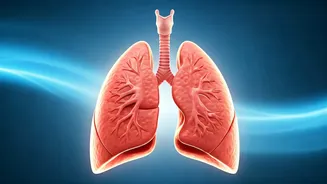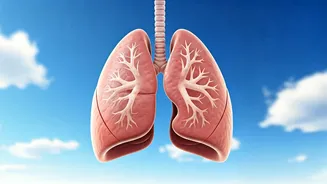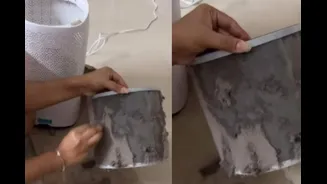Pollution's Silent Threat
Air pollution has become an increasingly pressing concern in many regions. It can severely impact respiratory health and overall well-being. Fine particulate
matter, harmful gases, and various pollutants in the air contribute to these health challenges. This is where proactive measures become essential to shield ourselves from pollution's detrimental effects. Understanding the sources of pollution, the nature of pollutants, and their harmful impacts provides a foundation for implementing protective strategies. This awareness can empower individuals to make informed choices, such as utilizing the 20-20-20 breathing technique, to improve their respiratory health and quality of life. Considering the rising levels of pollution, it's vital to incorporate effective health-preserving tactics into our daily lives.
The 20-20-20 Technique
The 20-20-20 breathing technique is a simple and accessible method to potentially mitigate the adverse effects of air pollution. It involves a specific breathing pattern designed to cleanse and calm the respiratory system. The process involves inhaling deeply for 20 seconds, holding the breath for another 20 seconds, and exhaling slowly for 20 seconds. This simple act has the potential to help clear the lungs, enhance oxygen intake, and reduce the impact of pollutants. This technique is easy to learn and can be practiced anywhere, making it a practical tool for daily use. Practicing this method in polluted environments, or even proactively, can assist in respiratory health and serve as a shield against potential hazards. Consistency is key, and integrating it into your daily routine can yield notable benefits over time.
How It Benefits You
The 20-20-20 breathing technique offers a range of potential benefits to help your body cope with air pollution. Firstly, the deep breaths taken during the inhale phase help to fully expand the lungs, maximizing oxygen intake. Secondly, holding the breath allows the body to utilize the absorbed oxygen more efficiently, supporting cellular function and providing vitality. Thirdly, the slow, controlled exhalation aids in removing pollutants and carbon dioxide from the lungs. This process can reduce inflammation, relieve stress, and promote a sense of calm. Regular practice can lead to improved lung capacity, enhanced respiratory function, and increased overall well-being. It is important to emphasize that while this technique can be beneficial, it is not a substitute for medical advice or preventative measures such as using air purifiers or masks in polluted areas.
Implementing It Daily
Incorporating the 20-20-20 breathing technique into your daily routine is simple and straightforward. You can begin by setting aside a few minutes each day, ideally in a quiet and clean environment. Sit comfortably, either on a chair or the floor, and close your eyes to focus on your breathing. Inhale deeply for 20 seconds, ensuring your lungs are completely filled. Then, hold your breath for another 20 seconds, paying attention to the sensations in your body. Finally, exhale slowly for 20 seconds, releasing all the air from your lungs. Repeat this cycle a few times. You can practice this technique multiple times throughout the day, particularly when you are in a polluted area or feel the effects of pollution. Consistency is key, so aim to integrate this practice into your daily schedule to reap the best results. Over time, you may find that the practice not only helps your lungs, but also encourages a sense of calm and better well-being.
Beyond the Technique
While the 20-20-20 breathing technique is a valuable tool, it's essential to adopt a holistic approach to address air pollution. Besides practicing the breathing exercise, consider additional measures such as using air purifiers at home and in the office. Also, wear N95 or similar masks when outdoors, particularly during high-pollution days. Stay informed about air quality levels in your area and plan your outdoor activities accordingly. Support environmental initiatives that aim to reduce air pollution and promote cleaner air. Furthermore, be mindful of indoor air quality by ensuring good ventilation and avoiding activities that can contribute to indoor pollution, such as smoking. This comprehensive strategy, which combines breathing exercises with other preventive measures and community involvement, strengthens your efforts to safeguard your respiratory health and enhance your overall quality of life.













